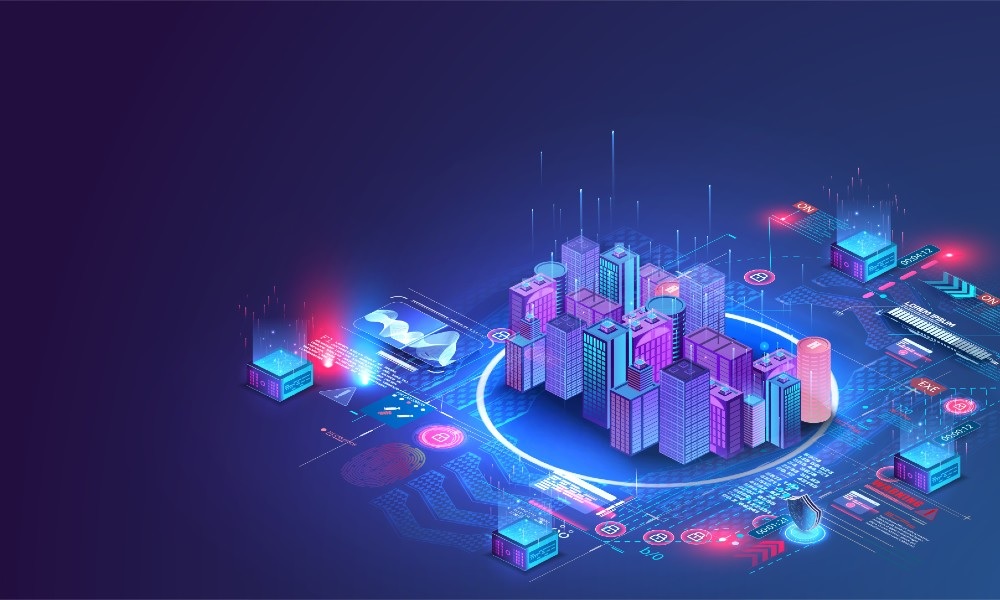
In the era of rapid urbanization and technological advancements, the concept of smart cities has gained considerable attention. Smart cities aim to enhance the quality of life for residents through the integration of technology and data-driven solutions. Among the various technologies powering smart cities, LoRaWAN has emerged as a powerful connectivity solution. In this case study, we will delve into the application of LoRaWAN and its role in transforming cities into smart, sustainable, and efficient urban centers.
Understanding LoRaWAN
LoRaWAN is a long-range-wide-area network (LoRaWAN) protocol designed to enable long-range communication for Internet of Things (IoT) devices. It utilizes a star-of-stars network topology, where multiple end-devices communicate with a central gateway. This technology operates in the unlicensed spectrum, ensuring cost-effective and scalable deployment across various urban environments.
LoraWAN:
LoRaWAN is the communication protocol that LoRa (Long Range) devices use to enable long-range communication. It provides a secure, low-power, long-range wireless connectivity solution, which is ideal for smart city applications.
Lora Gateway:
A LoRa gateway serves as the bridge between LoRaWAN end-devices and the network server. It receives and forwards data packets from end-devices to the server and vice versa. The gateway also manages network access and security for connected devices.
Benefits of LoRaWAN for Smart Cities
Long-Range Connectivity:
One of the primary advantages of LoRaWAN is its exceptional range. It can cover large distances, allowing cities to deploy sensors and devices across vast areas without the need for numerous gateways. This long-range connectivity makes it cost-effective and efficient for smart city implementations.
Low Power Consumption:
IoT devices in a smart city ecosystem are often battery-powered. LoRaWAN’s low power consumption ensures extended battery life, reducing the maintenance effort and cost associated with frequent battery replacements.
Scalability:
LoRaWAN networks can support thousands of devices simultaneously, making them highly scalable for smart city deployments. This scalability enables cities to accommodate a wide range of applications, such as waste management, environmental monitoring, parking management, and more.
Cost-Effectiveness:
LoRaWAN operates in the unlicensed spectrum, eliminating the need for costly frequency licenses. Additionally, its long-range capabilities reduce the number of gateways required, further lowering deployment costs. The combination of low-cost hardware and network infrastructure makes LoRaWAN an attractive choice for smart city projects with budget constraints.
Flexibility:
LoRaWAN can penetrate various physical obstructions, including buildings and dense urban environments. Its flexibility allows smart cities to deploy devices in challenging locations, ensuring seamless connectivity and efficient data transmission.
LoRaWAN Applications in Smart Cities
Smart Parking:
By deploying LoRaWAN-enabled sensors in parking spaces, cities can monitor real-time occupancy data. This information can be relayed to drivers, guiding them to available parking spots and reducing congestion.
Waste Management:
LoRaWAN facilitates intelligent waste management systems by equipping waste bins with sensors. These sensors monitor fill levels, optimizing waste collection routes and minimizing unnecessary trips, leading to cost savings and reduced environmental impact.
Environmental Monitoring:
LoRaWAN-based sensors can measure air quality, noise levels, temperature, humidity, and other environmental parameters. This data helps cities monitor pollution levels, detect anomalies, and take proactive measures to safeguard the environment and public health.
Smart Lighting:
LoRaWAN enables intelligent lighting systems that adjust based on real-time data, such as foot traffic, ambient light levels, and weather conditions. Smart lighting saves energy, enhances safety, and improves the overall urban experience.
Case Study: LoRaWAN Implementation in XYZ City
In XYZ City, the local government implemented a comprehensive LoRaWAN network to transform the city into a smart, sustainable urban center. They deployed LoRa gateways strategically across the city to ensure optimal coverage and connectivity. The LoRaWAN network enabled various applications, including smart parking, waste management, environmental monitoring, and smart lighting.
The smart parking system utilized LoRaWAN-enabled sensors to monitor parking spaces and provide real-time availability information to drivers via a mobile application. This reduced traffic congestion and improved parking efficiency.
The waste management system integrated LoRaWAN sensors into waste bins, enabling real-time monitoring of fill levels. The city’s waste collection trucks were equipped with route optimization software, which used the sensor data to optimize collection routes and reduce unnecessary pickups, resulting in cost savings and improved environmental sustainability.
Furthermore, XYZ City leveraged LoRaWAN-based sensors for environmental monitoring, allowing them to proactively address air pollution, noise levels, and other environmental factors. This data-driven approach helped the city implement targeted initiatives to enhance the quality of life for its residents.
Conclusion
LoRaWAN has emerged as a powerful connectivity solution for smart cities. Its long-range capabilities, low power consumption, scalability, and cost-effectiveness make it an ideal choice for various urban applications. As demonstrated by the case study of XYZ City, LoRaWAN implementation can lead to tangible benefits such as improved parking management, optimized waste collection, enhanced environmental monitoring, and efficient smart lighting systems. By embracing LoRaWAN technology, cities can pave the way for smarter, more sustainable urban living.
FAQs (Frequently Asked Questions)
Q1. What is LoRaWAN?
A1. LoRaWAN is a low-power wide-area network (LPWAN) protocol designed for long-range communication between IoT devices. It enables connectivity for smart city applications and operates in the unlicensed spectrum.
Q2. What is a LoRa gateway?
A2. A LoRa gateway serves as a bridge between LoRaWAN end-devices and the network server. It receives and forwards data packets, manages network access, and ensures secure communication.
Q3. How does LoRaWAN benefit smart cities?
A3. LoRaWAN offers long-range connectivity, low power consumption, scalability, cost-effectiveness, and flexibility. These benefits enable various smart city applications, such as smart parking, waste management, environmental monitoring, and smart lighting.
Q4. Can LoRaWAN be deployed in dense urban environments?
A4. Yes, LoRaWAN can penetrate physical obstructions and operate efficiently in dense urban environments. Its flexibility allows for seamless connectivity even in challenging locations.
Q5. What are the advantages of using LoRaWAN for smart city projects?
A5. LoRaWAN provides cost-effective deployment, extended battery life for devices, scalability to accommodate numerous IoT devices, and the ability to cover large distances with fewer gateways. These advantages make it an attractive choice for smart city implementations.

